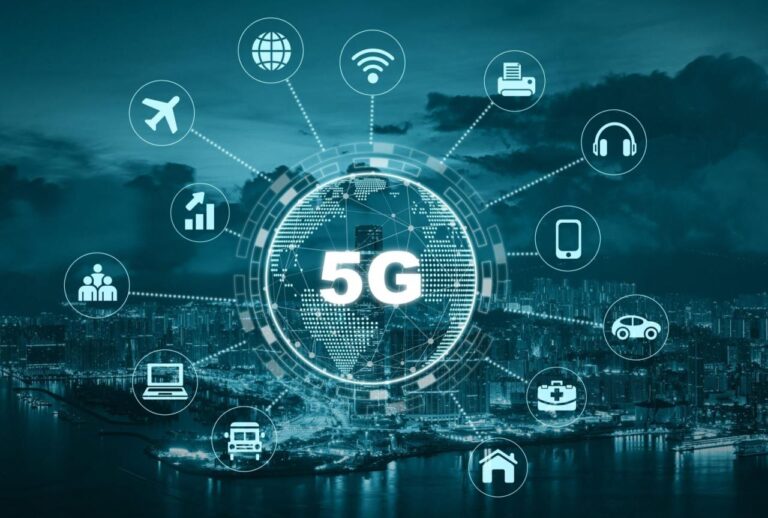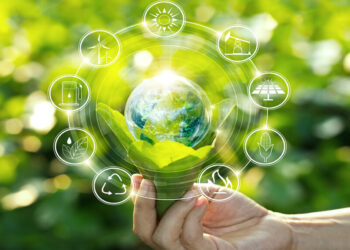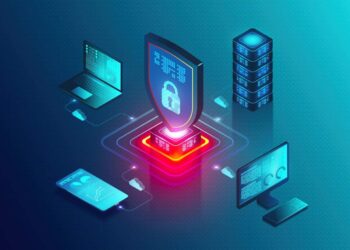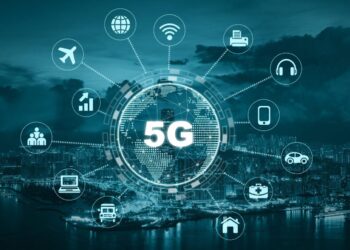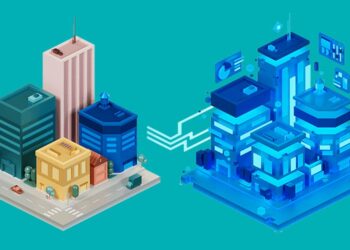The advent of 5G, the fifth generation of cellular technology, is far more than just a speed upgrade for our smartphones. It represents a foundational shift in how we connect, communicate, and innovate, promising to power unprecedented connectivity across every facet of our digital lives. Building upon the legacy of 4G LTE, 5G is engineered to deliver not only blistering speeds but also ultra-low latency and massive capacity, unlocking a wave of transformative applications that were previously confined to science fiction. From revolutionizing industries and enabling truly autonomous systems to reshaping urban environments and enhancing personal experiences, 5G is a critical enabler for the next era of technological advancement. This in-depth exploration delves into the core capabilities of 5G, its profound impact across diverse sectors, the significant challenges it faces, and its essential role in shaping our hyper-connected future. Understanding this revolutionary technology is paramount for anyone navigating the intricate tapestry of the 21st-century digital landscape.
The 5G’s Core Capabilities

While faster internet is the most immediate benefit often cited, 5G’s true power lies in its three foundational pillars, known as the “trinity” of 5G capabilities.
A. Enhanced Mobile Broadband (eMBB)
This is the most direct and noticeable improvement for consumers, offering a significant leap in data rates.
- Peak Data Rates: 5G can theoretically achieve peak download speeds of up to 10 gigabits per second (Gbps), significantly faster than 4G LTE’s typical speeds of tens to hundreds of megabits per second (Mbps).
- Higher Average Speeds: More importantly, 5G aims to provide consistently higher average speeds, even in crowded areas, ensuring a smoother experience for streaming 4K video, cloud gaming, and large file downloads.
- Capacity Increase: 5G networks can handle a much larger volume of data traffic and more connected devices simultaneously, alleviating network congestion.
This capability underpins rich multimedia experiences, seamless augmented and virtual reality (AR/VR) content delivery, and efficient mobile productivity.
B. Ultra-Reliable Low-Latency Communication (URLLC)
This is the game-changer for critical applications where even a few milliseconds of delay can have severe consequences.
- Ultra-Low Latency: 5G can achieve latencies as low as 1 millisecond (ms), a dramatic improvement over 4G’s 20-30 ms. This near real-time responsiveness is crucial.
- High Reliability: URLLC ensures that data packets are delivered with extremely high certainty and minimal errors, vital for mission-critical services.
This capability is essential for enabling autonomous vehicles, remote surgery, industrial automation, and other applications demanding instant and dependable communication.
C. Massive Machine-Type Communication (mMTC)
This pillar addresses the burgeoning need to connect billions of devices, forming the backbone of the Internet of Things (IoT).
- Massive Device Density: 5G networks can support up to 1 million devices per square kilometer, a tenfold increase over 4G. This density is crucial for smart cities, industrial IoT, and large-scale sensor networks.
- Energy Efficiency for IoT Devices: Designed to connect low-power, low-bandwidth devices efficiently, ensuring long battery life for IoT sensors operating in remote locations.
- Scalability: The architecture allows for the seamless integration and management of a vast and diverse array of connected devices.
mMTC is the enabler for truly smart environments, connecting everything from smart meters and environmental sensors to wearables and agricultural machinery.
The Technological Underpinnings of 5G
Achieving these revolutionary capabilities requires a sophisticated blend of new technologies and architectural shifts.
A. Millimeter Wave (mmWave) Spectrum
5G utilizes a much wider range of the radio frequency spectrum than previous generations.
- High Frequencies: mmWave operates in higher frequency bands (typically 24 GHz to 100 GHz). These frequencies offer vast bandwidth, allowing for extremely fast data rates.
- Short Range & Obstruction: The trade-off is that mmWave signals have a shorter range and are easily blocked by obstacles (buildings, trees, even rain), requiring a denser network of smaller cell sites.
- Urban Deployment: Ideal for densely populated urban areas, stadiums, and specific venues where high capacity and speed are crucial over short distances.
B. Massive MIMO (Multiple-Input, Multiple-Output)
MIMO technology uses multiple antennas at both the transmitter and receiver to improve communication performance.
- More Antennas: “Massive” MIMO means cell towers use hundreds of antennas (e.g., 64T64R – 64 transmit, 64 receive) compared to 4G’s handful.
- Spatial Multiplexing: These antennas can simultaneously transmit and receive multiple data streams, boosting network capacity and efficiency without needing more spectrum.
- Beamforming: Directing radio signals precisely towards specific users or devices, reducing interference and improving signal quality, especially important for mmWave.
Massive MIMO is a key technology for enhancing both speed and capacity in 5G networks.
C. Network Slicing
Network slicing is a revolutionary concept enabled by software-defined networking (SDN) and network functions virtualization (NFV).
- Virtual Networks: Allows mobile network operators (MNOs) to carve out multiple virtual, isolated, and customized logical networks on top of a single physical 5G infrastructure.
- Service Optimization: Each “slice” can be optimized with specific characteristics (e.g., high bandwidth for video streaming, ultra-low latency for autonomous vehicles, low power for IoT sensors).
- Dedicated Resources: Provides dedicated network resources and performance guarantees for different applications and industries.
Network slicing enables 5G to cater to a vast array of diverse use cases with varying requirements, moving beyond a “one-size-fits-all” network.
D. Edge Computing
To achieve ultra-low latency, processing power needs to be closer to the user or device.
- Distributed Processing: Moves computation and data storage from centralized cloud servers to the “edge” of the network, closer to the data source (e.g., cell towers, local data centers).
- Reduced Latency: Minimizes the round-trip time for data, crucial for real-time applications like autonomous driving and AR/VR.
- Enhanced Security: Processing data locally can reduce the need to transmit sensitive information over long distances.
- Applications: Powers real-time analytics for industrial IoT, augmented reality applications, and immediate responses for critical control systems.
Edge computing is a symbiotic partner to 5G, unlocking its full potential for low-latency applications.
E. Software-Defined Networking (SDN) and Network Functions Virtualization (NFV)
These underlying architectural changes make 5G networks more flexible and programmable.
- SDN: Decouples the control plane (network intelligence) from the data plane (data forwarding), allowing network management to be done centrally and programmatically.
- NFV: Virtualizes network functions (e.g., routers, firewalls, load balancers) that traditionally ran on dedicated hardware, allowing them to run as software on standard servers.
- Agility and Flexibility: Enable rapid deployment of new services, dynamic network configuration, and efficient resource utilization, crucial for supporting diverse 5G use cases.
- Cost Efficiency: Reduces reliance on expensive, proprietary hardware.
5G’s Transformative Impact Across Industries
The widespread deployment of 5G is poised to revolutionize numerous sectors, creating unprecedented opportunities and efficiencies.
A. Automotive and Transportation
5G is a critical enabler for the future of connected and autonomous vehicles.
- Vehicle-to-Everything (V2X) Communication: Enables vehicles to communicate with each other (V2V), with infrastructure (V2I), with pedestrians (V2P), and with the network (V2N) in real-time. This is crucial for collision avoidance, traffic flow optimization, and cooperative driving.
- Autonomous Driving: Ultra-low latency is essential for split-second decision-making in self-driving cars, allowing for immediate responses to road conditions and other vehicles.
- Smart Traffic Management: 5G-connected sensors, traffic lights, and cameras can communicate in real-time to optimize traffic flow, reduce congestion, and improve safety in smart cities.
- Connected Public Transport: Real-time tracking of buses and trains, predictive maintenance for public transport fleets, and enhanced passenger information systems.
B. Manufacturing and Industry 4.0
5G is the backbone for the next industrial revolution, often called Industry 4.0.
- Wireless Factory Automation: Replacing miles of cables with reliable 5G connections for industrial robots, automated guided vehicles (AGVs), and production lines, enabling more flexible factory layouts.
- Predictive Maintenance: Sensors on machinery transmit real-time data over 5G to cloud-based AI systems, predicting equipment failures before they occur, reducing downtime and costs.
- Remote Control and Operation: Allows for remote control of machinery in dangerous or inaccessible environments (e.g., mines, hazardous waste sites).
- Augmented Reality (AR) for Workers: On-site technicians can use AR glasses connected via 5G to access real-time instructions, diagrams, and remote expert assistance.
- Digital Twins: 5G facilitates the real-time data flow needed to create and update digital replicas of physical assets, processes, or entire factories, enabling simulations and optimization.
C. Healthcare
5G promises to transform healthcare delivery, making it more efficient, accessible, and precise.
- Remote Surgery: Ultra-low latency enables surgeons to perform complex operations remotely with robotic assistance, potentially expanding access to specialized care.
- Telemedicine and Remote Monitoring: High-bandwidth 5G connections allow for high-resolution video consultations and continuous, real-time monitoring of patients’ vital signs from home.
- Connected Ambulances: Real-time transmission of patient data and video to hospitals while en route, allowing for earlier diagnosis and preparation.
- AR/VR for Medical Training: Immersive training simulations for doctors and nurses.
- Smart Hospitals: 5G can connect millions of medical devices, sensors, and equipment within a hospital, optimizing workflows and asset tracking.
D. Smart Cities and Public Safety
5G is fundamental to the development of intelligent urban environments.
- Smart Grids: Real-time monitoring and management of electricity grids, optimizing energy distribution and integrating renewable sources.
- Connected Public Lighting: Smart streetlights that adjust illumination based on real-time conditions, saving energy and improving safety.
- Public Safety: Enhanced emergency services with real-time video feeds from drones, connected cameras, and wearable devices for first responders.
- Environmental Monitoring: A vast network of 5G-connected sensors monitoring air quality, water levels, and noise pollution.
- Smart Waste Management: Connected bins signal when they are full, optimizing collection routes and reducing costs.
E. Entertainment and Immersive Experiences
5G unlocks a new generation of immersive and interactive content.
- 4K/8K Video Streaming: Seamless delivery of ultra-high-definition content to mobile devices.
- Cloud Gaming: Playing graphically intensive games streamed from the cloud with minimal lag, eliminating the need for powerful local hardware.
- Augmented Reality (AR) and Virtual Reality (VR): 5G’s high bandwidth and low latency are crucial for rendering complex AR/VR environments and supporting multi-user immersive experiences without motion sickness.
- Live Events: Enhanced fan experiences at stadiums with real-time stats, multiple camera angles, and AR overlays available on personal devices.
- Volumetric Video: Capturing and transmitting 3D video of real-world objects and people, allowing for their realistic placement in virtual environments.
The Challenges and Hurdles of 5G’s Development
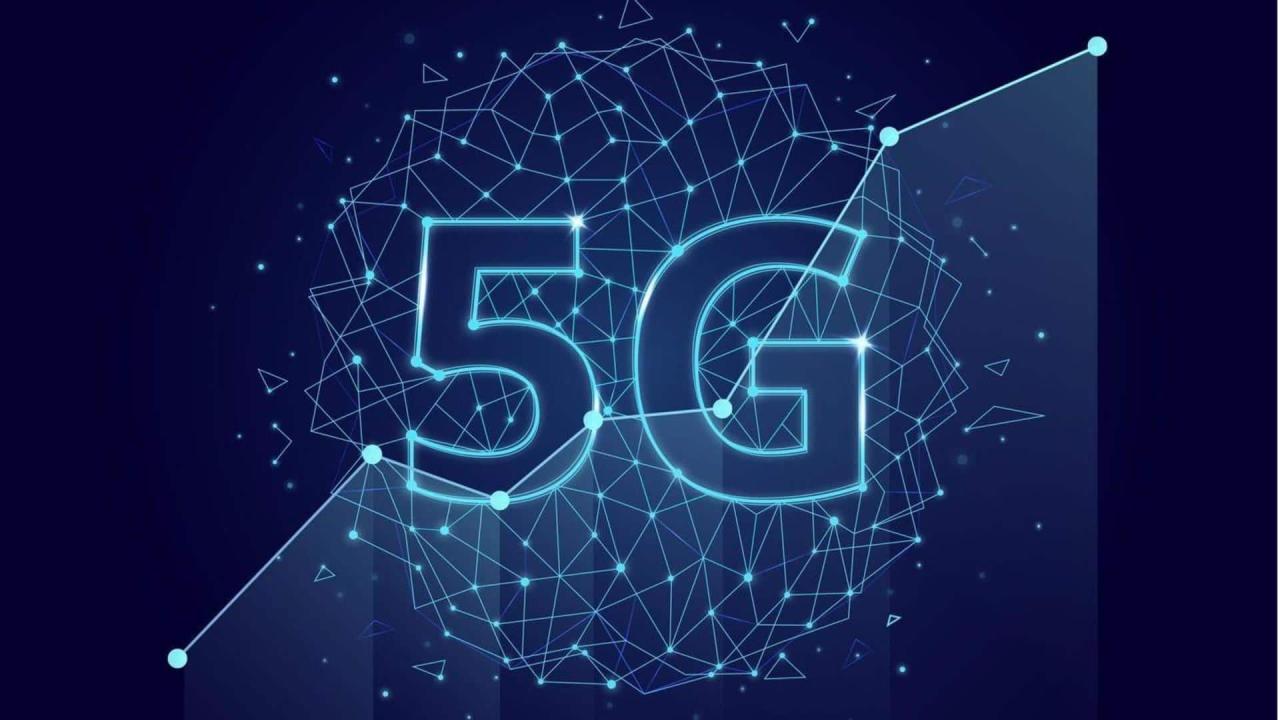
Despite its immense promise, the widespread rollout and adoption of 5G face several significant obstacles.
A. Infrastructure Investment and Density
Building a comprehensive 5G network requires massive capital expenditure.
- Densification: Especially for mmWave, 5G requires a far denser network of small cells compared to 4G, meaning many more antennas are needed.
- Fiber Backhaul: Each 5G cell site needs high-capacity fiber optic cables to connect to the core network, which is costly and time-consuming to deploy.
- Site Acquisition: Finding suitable locations for new antennas, especially in urban areas, can be challenging due to zoning regulations and community resistance.
- Power Requirements: Small cells require consistent power, adding to deployment complexities.
B. Spectrum Availability and Allocation
Access to sufficient radio spectrum is crucial for 5G performance.
- Spectrum Auctions: Governments need to effectively allocate and auction off new spectrum bands (low-band, mid-band, and high-band/mmWave) to mobile operators.
- Harmonization: International agreement on spectrum allocation is important for global roaming and equipment compatibility.
- Band Fragmentation: Different countries and regions may use different 5G bands, complicating device compatibility and global rollout.
C. Cybersecurity Risks
The expanded attack surface of a hyper-connected 5G world presents new security challenges.
- Increased Attack Surface: More connected devices and the virtualization of network functions create more potential entry points for attackers.
- Edge Computing Security: Securing data and applications at the network edge is critical, as these locations may be less protected than central data centers.
- Network Slicing Vulnerabilities: Ensuring that each network slice is truly isolated and secure from others.
- IoT Device Vulnerabilities: Many IoT devices have weak security features, making them easy targets for botnet formation or data breaches.
- Supply Chain Security: The global nature of 5G equipment manufacturing raises concerns about potential backdoors or vulnerabilities introduced during production.
D. Regulatory and Policy Challenges
Governments play a crucial role in enabling or hindering 5G deployment.
- Permitting Streamlining: Expediting the process for installing new antennas and fiber infrastructure.
- Privacy Concerns: Addressing public concerns about data collection and surveillance in a highly connected environment.
- Health Concerns (Misinformation): Combating widespread misinformation about the health effects of 5G radiation, which lacks scientific basis but fuels public opposition.
- Net Neutrality: Debates around how network slicing might impact net neutrality principles.
E. Energy Consumption
While 5G networks are more energy efficient per bit of data, the sheer increase in data traffic and network density can lead to higher overall energy consumption.
- Green 5G: Research and development into more energy-efficient hardware, AI-powered energy management, and integration with renewable energy sources for cell sites.
- Heat Dissipation: Denser equipment deployments require efficient cooling solutions, which also consume energy.
5G’s Continual Evolution and Impact
Despite the challenges, the rollout of 5G is progressing rapidly worldwide, paving the way for a truly transformative digital era.
A. 5G Advanced
The evolution of 5G is already underway, with new standards constantly being developed.
- Further Enhancements: 5G Advanced will bring even greater capabilities in terms of speed, latency, energy efficiency, and support for new applications.
- AI Integration: Deeper integration of AI and machine learning into the network for optimized performance, resource management, and security.
- Expanded IoT Support: Enhanced capabilities for passive IoT, massive sensor deployments, and critical industrial IoT.
- XR (Extended Reality) Optimization: Further improvements for immersive AR, VR, and mixed reality experiences.
B. Convergence with Other Technologies
5G’s true power will be realized through its synergy with other cutting-edge technologies.
- AI: AI will manage, optimize, and secure 5G networks, and 5G will provide the connectivity for AI-powered edge devices and cloud analytics.
- IoT: 5G is the essential backbone for connecting billions of IoT devices, enabling smart cities, connected industries, and intelligent environments.
- Cloud and Edge Computing: 5G provides the high-speed, low-latency conduit for offloading computation to the cloud and edge data centers.
- Blockchain/Web3: Secure and efficient connectivity for decentralized applications and the burgeoning metaverse.
- Quantum Computing: While futuristic, 5G will be the communication layer for quantum internet if it ever materializes.
C. Industry-Specific Private 5G Networks
Beyond public networks, enterprises are deploying private 5G networks for dedicated use cases.
- Enhanced Security and Control: Private networks offer greater control over data and security, crucial for sensitive industrial applications.
- Tailored Performance: Can be optimized for specific needs (e.g., ultra-low latency for robotics, high bandwidth for video surveillance) within a defined area.
- Campus and Factory Automation: Ideal for smart factories, logistics hubs, and large enterprise campuses.
D. Global Reach and Digital Inclusion
As 5G rolls out globally, it has the potential to bridge the digital divide.
- Broadband Access: Providing high-speed internet to underserved rural areas, where fiber deployment might be cost-prohibitive.
- Economic Development: Enabling digital transformation and new economic opportunities in developing regions.
- Accessibility: Opening up new possibilities for accessibility tools and services for people with disabilities.
Conclusion
5G Powers Connectivity not just as a faster network, but as the indispensable backbone for the next wave of digital innovation. Its unique combination of enhanced mobile broadband, ultra-reliable low-latency communication, and massive machine-type communication is unlocking capabilities that will fundamentally reshape industries, enhance urban living, and redefine our personal and professional interactions. While challenges related to infrastructure, spectrum, and cybersecurity persist, the relentless march of technological advancement and global investment ensures 5G’s pervasive spread. As we continue to build out this invisible infrastructure, its synergy with AI, IoT, and edge computing will truly unleash the potential of a hyper-connected world, promising a future of unprecedented efficiency, intelligence, and immersive experiences that were once unimaginable. The era of omnipresent, intelligent connectivity is not just dawning; it’s being powered by 5G, right now.

